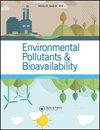硫和钼在海洋和河流冲积水稻土中的分异
Q3 Chemical Engineering
引用次数: 3
摘要
稻田的间歇淹水和排水状况会引起土壤形态和化学特征的变化。我们进行了一项顺序分选研究,以深入了解硫(S)和钼(Mo)在淹没冲积水稻土中的溶解度。样品(0-15 cm和15-30 cm)分别取自吉打州和吉兰丹地区的海洋和河流冲积土,依次用NaHCO3、NaOH、HCl和HClO4-HNO3提取。吉打州和吉兰丹的上层和下层总S含量分别为273 ~ 1121 mg kg - 1和177 ~ 1509 mg kg - 1。吉打州表层和底土的Mo平均含量分别为0.34和0.27 mg kg - 1。吉兰丹平均Mo总量为表层0.25 mg kg - 1,底土0.28 mg kg - 1。吉打地区上层土壤阳离子交换容量(CEC)与植物有效钼量呈显著正相关。吉兰丹土壤系低层总有效S和中期有效S与总碳(C)呈显著相关。但在吉兰丹土壤系列表层,CEC与总有效硫和中期有效硫呈强相关。我们的研究结果表明,洪水条件对稻田土壤S和Mo含量的影响可能导致S和Mo化学反应的长期变化。本文章由计算机程序翻译,如有差异,请以英文原文为准。
Sulfur and molybdenum fractionation in marine and riverine alluvium paddy soils
Abstract Intermittently submergence and drainage status of paddy fields can cause alterations in morphological and chemical characteristics of soils. We conducted a sequential fractionation study to provide an insight into solubility of Sulfur (S) and Molybdenum (Mo) in flooded alluvial paddy soils. The samples (0–15 and 15–30 cm) were taken from marine and riverine alluvial soils in Kedah and Kelantan areas, respectively, and were sequentially extracted with NaHCO3, NaOH, HCl, and HClO4–HNO3. Total S in upper and lower layers of Kedah and Kelantan ranged between 273 and 1121 mg kg−1, and 177 to 1509 mg kg−1, respectively. In upper layers and subsoil of Kedah, average total Mo were 0.34 and 0.27 mg kg−1, respectively. Average total Mo in Kelantan were 0.25 mg kg−1 (surface layer) and 0.28 mg kg−1 (subsoil). Cation exchange capacity (CEC) was positively correlated with plant available amounts of Mo in upper layers of Kedah area. Also, total and medium-term plant-available S was correlated with total carbon (C) at lower layers of Kelantan soil series. But in surface layers of Kelantan soil series, CEC was strongly correlated with total and medium-term plant-available S. Our results indicates that the influence of flooding conditions on soil S and Mo contents in paddy fields may cause long-term changes in S and Mo chemical reactivities.
求助全文
通过发布文献求助,成功后即可免费获取论文全文。
去求助
来源期刊
CiteScore
1.62
自引率
0.00%
发文量
0
审稿时长
1 months
期刊介绍:
Chemical Speciation & Bioavailability ( CS&B) is a scholarly, peer-reviewed forum for insights on the chemical aspects of occurrence, distribution, transport, transformation, transfer, fate, and effects of substances in the environment and biota, and their impacts on the uptake of the substances by living organisms. Substances of interests include both beneficial and toxic ones, especially nutrients, heavy metals, persistent organic pollutants, and emerging contaminants, such as engineered nanomaterials, as well as pharmaceuticals and personal-care products as pollutants. It is the aim of this Journal to develop an international community of experienced colleagues to promote the research, discussion, review, and spread of information on chemical speciation and bioavailability, which is a topic of interest to researchers in many disciplines, including environmental, chemical, biological, food, medical, toxicology, and health sciences.
Key themes in the scope of the Journal include, but are not limited to, the following “6Ms”:
Methods for speciation analysis and the evaluation of bioavailability, especially the development, validation, and application of novel methods and techniques.
Media that sustain the processes of release, distribution, transformation, and transfer of chemical speciation; of particular interest are emerging contaminants, such as engineered nanomaterials, pharmaceuticals, and personal-care products.
Mobility of substance species in environment and biota, either spatially or temporally.
Matters that influence the chemical speciation and bioavailability, mainly environmentally relevant conditions.
Mechanisms that govern the transport, transformation, transfer, and fate of chemical speciation in the environment, and the biouptake of substances.
Models for the simulation of chemical speciation and bioavailability, and for the prediction of toxicity.
Chemical Speciation & Bioavailability is a fully open access journal. This means all submitted articles will, if accepted, be available for anyone to read, anywhere, at any time. immediately on publication. There are no charges for submission to this journal.

 求助内容:
求助内容: 应助结果提醒方式:
应助结果提醒方式:


